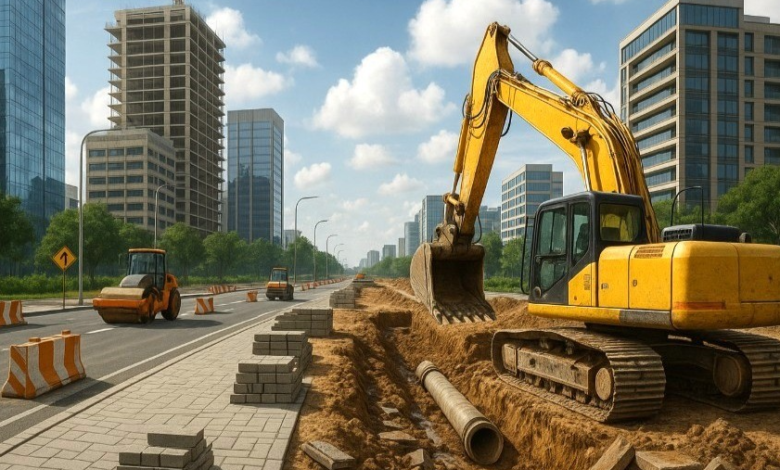A New Era of Urban Transformation

Introduction
Cities are living organisms that evolve with the needs of their people. Over time, infrastructure becomes outdated, cultural heritage risks being forgotten, and the demand for modern spaces grows stronger. Hong Kong, known for its dynamic energy and global significance, has recognized this challenge and responded with thoughtful measures. One of the most inspiring initiatives in this direction is the revitalization project hong kong a comprehensive effort to balance heritage preservation with modern development.
Importance of Revitalization in Urban Development
Urban revitalization is not simply about restoring old buildings. It is a multidimensional approach that aims to bring new life into areas that may have been neglected or underutilized. Revitalization integrates culture, community, sustainability, and commerce to create spaces that meet the needs of current generations without erasing the past. In a city as dense and historically rich as Hong Kong, such efforts are particularly valuable.
Preserving Heritage and Identity
Hong Kong is a blend of Eastern and Western influences, reflected in its architecture, traditions, and way of life. The revitalization project hong kong seeks to protect this heritage by renovating historic structures, restoring traditional facades, and converting older buildings into vibrant cultural and commercial hubs. Instead of demolishing landmarks, the city is choosing to integrate them into the modern urban landscape, ensuring that history remains a part of daily life.
Community Engagement and Participation
No urban project can succeed without the involvement of the people it aims to serve. In Hong Kong, the community is at the heart of the revitalization process. Local residents, cultural organizations, and businesses are invited to share their input, ensuring the spaces reflect collective values. Workshops, public consultations, and cultural events foster a sense of ownership among the people, turning the revitalized districts into genuine community assets.
Enhancing Cultural Tourism
Tourism plays a vital role in Hong Kong’s economy, and cultural tourism is becoming increasingly significant. By restoring historic neighborhoods and creating vibrant districts, the revitalization project hong kong attracts visitors who are eager to explore authentic experiences. From guided tours to cultural exhibitions, tourists can immerse themselves in the city’s history while enjoying modern conveniences. This not only supports tourism but also boosts local businesses.
See also: Top 10 Portable Monitors for Business Presentations
Economic Opportunities and Local Business Growth
Revitalized districts often become thriving centers of commerce. In Hong Kong, small businesses, artisans, and creative startups benefit from newly developed spaces. Former warehouses or industrial zones are repurposed into markets, studios, and cafes. This combination of tradition and innovation generates fresh economic opportunities, supports entrepreneurship, and stimulates job creation.
Environmental Sustainability in Revitalization
Sustainability is a key pillar of modern urban development. The revitalization project hong kong emphasizes environmentally friendly practices, such as reusing materials, introducing green spaces, and improving energy efficiency. By adopting sustainable construction methods and integrating eco-friendly technologies, Hong Kong ensures that revitalization is not just about aesthetics but also about long-term environmental responsibility.
Strengthening Social Bonds
Revitalized spaces often serve as platforms for cultural exchange and social connection. Parks, art galleries, community centers, and open spaces encourage interaction among diverse groups. In Hong Kong, this strengthens the social fabric by bringing together locals, expatriates, and tourists in shared experiences. Cultural performances, art exhibitions, and food festivals foster harmony and celebrate diversity.
Challenges Faced During Revitalization
Despite its many benefits, revitalization is not without challenges. Balancing modernization with heritage preservation requires careful planning. Rising property values can also risk displacing long-term residents, creating concerns about gentrification. Moreover, coordinating between multiple stakeholders, including government agencies, developers, and the public, demands patience and cooperation. However, with strong policies and community-focused strategies, these challenges can be addressed effectively.
Examples of Successful Projects
Several districts in Hong Kong have already undergone impressive transformations. Old textile mills have been converted into creative arts centers, while colonial-era buildings have been adapted into museums and cultural venues. These successful examples highlight how the revitalization project hong kong blends historical charm with modern utility, setting a model for other urban centers worldwide.
Looking Ahead to the Future
Urban landscapes are constantly changing, and revitalization will continue to play a central role in Hong Kong’s development. The long-term vision includes creating a city where tradition and innovation coexist harmoniously. As future generations inherit these spaces, they will experience both the richness of history and the opportunities of modern life.
Conclusion
The revitalization project hong kong represents far more than urban renewal. It is a symbol of balance—between old and new, tradition and progress, community and commerce. By focusing on heritage preservation, sustainability, and social inclusion, Hong Kong is setting a global example of how cities can adapt to modern demands while respecting their past. This journey demonstrates that revitalization is not just about buildings but about creating living, breathing spaces that reflect the soul of the city.



